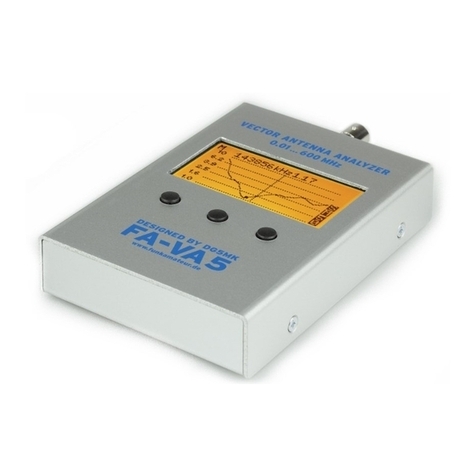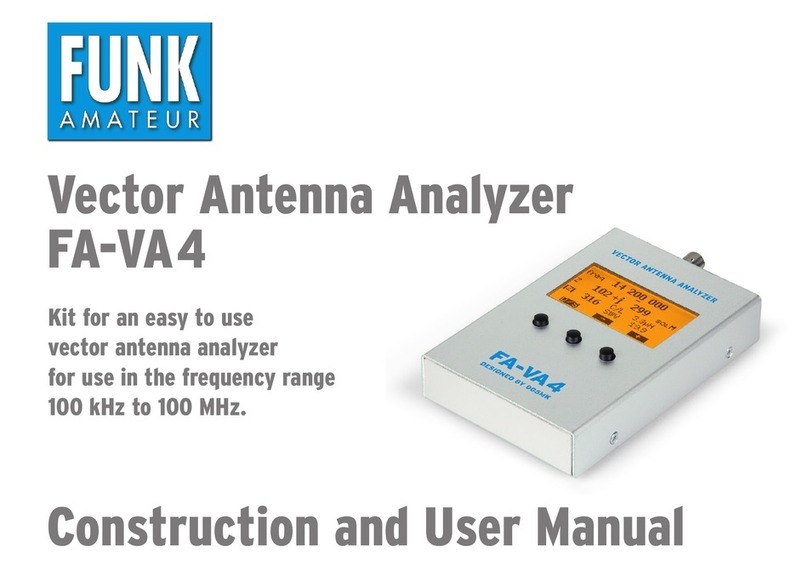8 • BX-245 © Box 73 Amateurfunkservice GmbH 2018
to pull with the flat-nose pliers on the thin
rubber nipple on the inside and at the same
time to turn the rubber foot slightly. Then
cut the protruding rubber nipples to 2 mm
with the side cutter (Figure 9) so that they
do not touch the board later. The board is
now inserted by sliding the BNC jack into
the housing lower shell and the four M3
screws are screwed in at the corners of the
board and gently tightened. The BNC
socket must then be screwed together with
the toothed washer and nut and gently
tightened.
To avoid mechanical stresses on the main
board, the four fixing screws of the board
should be loosened and tightened again,
then do the same with the nut of the BNC
socket.
Now insert the batteries observing correct
polarity. Next the housing cover is fitted
and fastened with four M3 countersunk
screws.
Finally, attach the Instrument type label to
the bottom of the housing! The FA-VA5 is
now ready for operation and can already
be used in uncalibrated mode.
General notes on operation
The FA-VA5 antenna analyzer can be used
as ameasuring device immediately after
assembly. It then operates in uncalibrated
mode and the displayed results are subject
to ahigher error than is the case after a
correct calibration. The uncalibrated mode
can always be selected later via the Setup
Menu if, for example, there are doubts
about the validity of the stored calibration
data.
nCautions
Please note the FA-VA5 is a sensitive mea-
suring device. No RF energy should
reach the test socket to avoid destroying
the components at the input! This could
happen when transmitting with the anten-
na connected in close proximity of the
VA5. Likewise, static charges must be
kept away from the test socket. Isolated
antenna structures must therefore be dis-
charged by grounding them first.
Rechargeable batteries should not be
used in the FA-VA5 because there is no
electronic protection against over-dis-
charge and there is no battery charging fa-
cility in the instrument. eep discharge
makes rechargeable batteries useless and
can even destroy them. Leaking batteries
can also cause damage.
The FA-VA5 is designed to make opti-
mum use of 1.5V alkaline cells. In order
to achieve the longest possible battery
life, it is advisable to use the display back-
light only if it is otherwise impossible to
read the display. In daylight or outdoors
the backlight is usually not needed. A
dimmed brightness setting will also help
to save power.
The number of measurements or display
cycles should be selected to produce are-
peat rate that is sufficient for the measure-
ment in question. These parameters can
be changed in the Setup menu and have a
significant influence on the power con-
sumption and thus on the life of the bat-
teries.
It is advisable that BNC plugs should be
turned slightly back and forth after the
bayonet catch engages to improve contact
engagement. Otherwise, under certain cir-
cumstances, “inexplicable” measuring er-
rors may occur.
Fig. 9: Cut rubber feet after insertion into the
housing





























